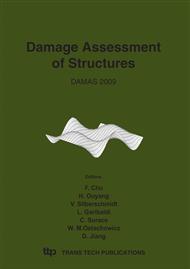p.79
p.87
p.95
p.101
p.109
p.117
p.125
p.135
p.143
Semi-Quantitative Analysis of Defect in Pipelines through the Use of Technique of Ultrasonic Guided Waves
Abstract:
Modernized cities must have adequate infrastructures to support the daily needs from her citizens. The continuity in pipeline services that supply water, gas and oil to citizens and deliver wastes to designated collectors are in prime concern to any modernized city. However, in-service pipeline is prone to defects due to aging, external impacts, or hazardous operating environment. It is of prime importance to apply an efficient inspection method to characterize the potential defect in pipeline so that the information of damage caused can be determined prior to the fatal rupture of pipeline. An early warning generated from an accurate characterization of defect can encourage the performance of proper remedy and maintenance for minimizing the scope of damage to pipelines. In this paper, a presentation is given to an advanced inspection technique based on ultrasonic guided waves. This technique has already shown great potentials in non-destructive testing of material and structures in many fields. The advantages and difficulties involved in the pipeline inspection using ultrasonic guided waves have been identified. For the quantitative characterization of defect in pipeline inspection based on advanced guided waves, we propose the method through considering the reflected signal since it provides useful information related to defect. The method analyzes the captured signals reflected from the potential defect, decomposes the embedded dimensional information of defect and then accordingly identifies its severity. Although the experiments were conducted on artificial defects, the results proved that qualitative characterization of defect is feasible. Combined with guided waves, our method can provide comprehensive information related to the existence, location, severity of defect etc., through the analysis of reflected signal from the interactions of excited guided waves with pipeline defect.
Info:
Periodical:
Pages:
109-116
Citation:
Online since:
June 2009
Authors:
Price:
Сopyright:
© 2009 Trans Tech Publications Ltd. All Rights Reserved
Share:
Citation:


